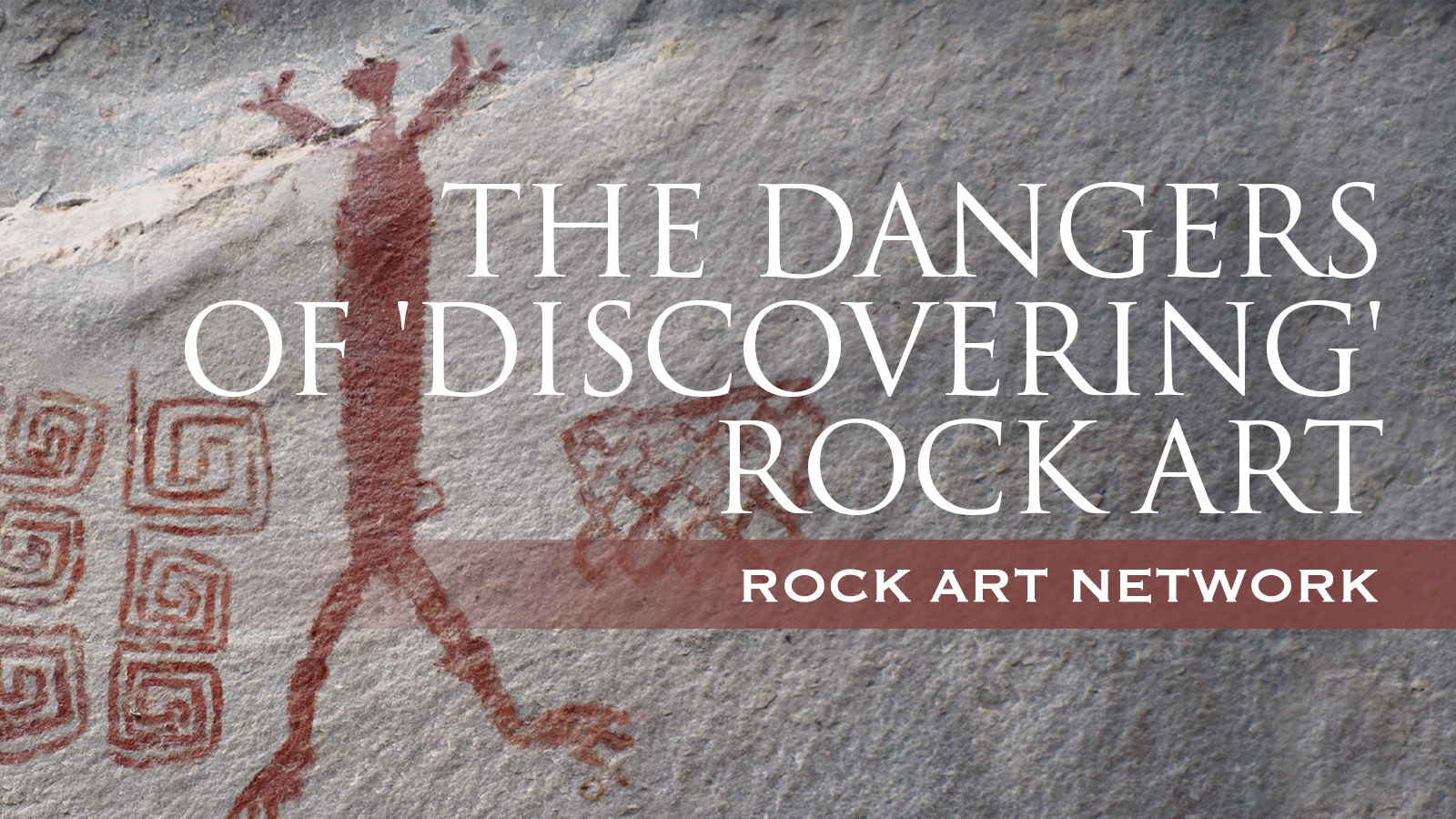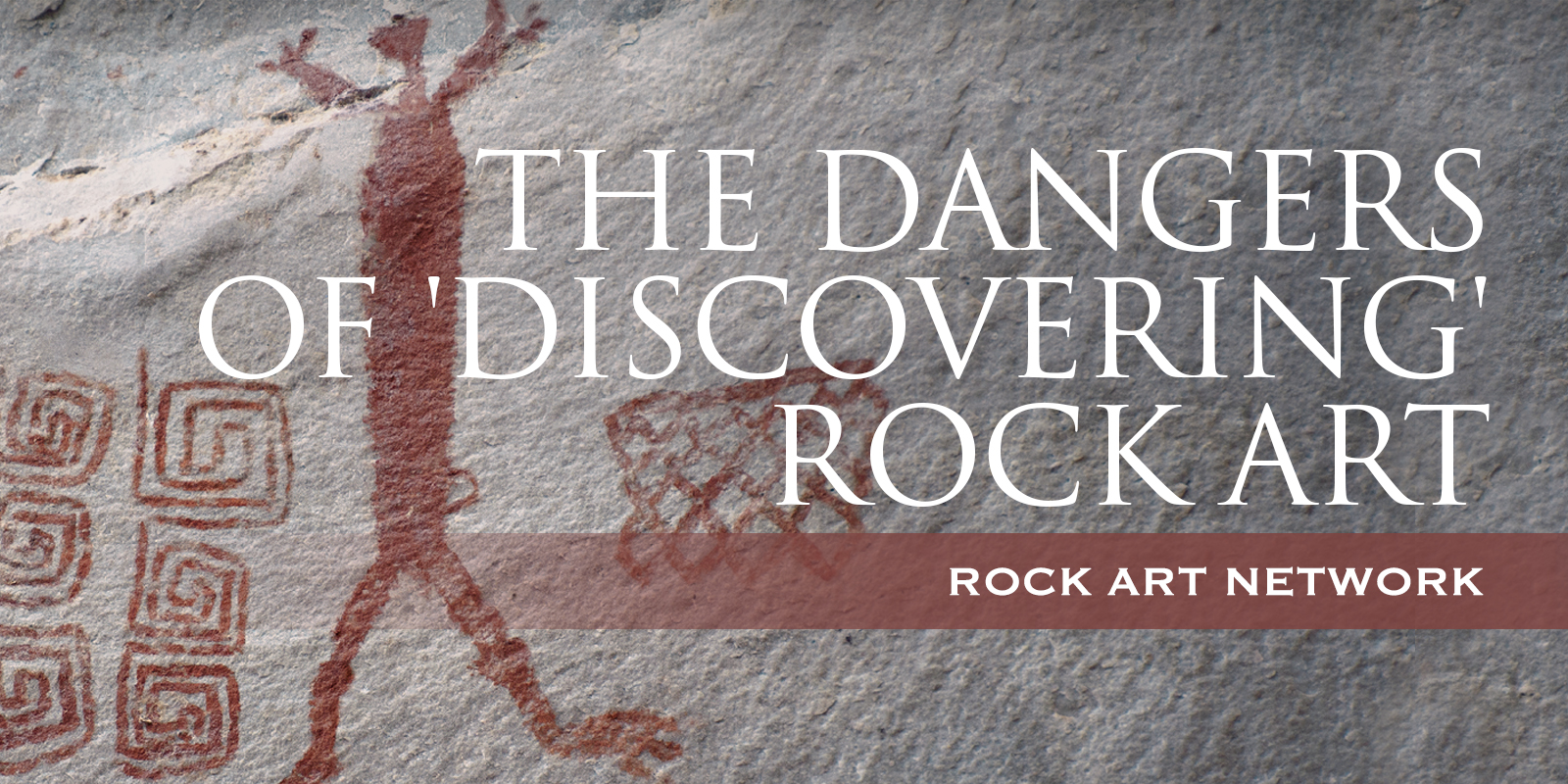


by Peter Robinson
Editor, Bradshaw Foundation
Two recent articles on the Rock Art Network website highlight the importance of working with indigenous communities when understanding, recording and preserving rock art. One article - 'Exploring the wonders of cave art in Australia' - was based on a radio interview with Professor Paul S.C. Taçon, ARC Australian Laureate Fellow (2016-2021), Chair in Rock Art Research and Professor of Anthropology and Archaeology, Griffith University, Australia & Director, The Place, Evolution and Rock Art Heritage Unit (PERAHU), joined by Professor Josephine McDonald, Rio Tinto Chair of Rock Art Studies, ARC Future Fellow (2011-2016), Director of the Centre for Rock Art Research & Management at the University of Western Australia, and First Nations colleague Wayne Brennan, archaeologist & Interpretive Officer at National Parks and Wildlife Service. The conversation covered fundamental aspects of rock art, perhaps the most salient of which was the importance of the art within the indigenous communities and the ensuing dialogue with scientists. Both Paul and Josephine are members of the Rock Art Network.
Another article by Tom McClintock, Research Associate at the Getty Conservation Institute and a member of the Rock Art Network - 'Studying the Source of Dust Using a Simple and Effective Methodology' - describes his research in Australia in conservation and site management. Here he was enlisted by Njanjma Rangers, an indigenous ranger group dedicated to natural and cultural resource management based in the community of Gunbalanya in Australia’s Northern Territory.
Conversations I have had with all members of the Rock Art Network reinforce this point. So it was interesting to observe a deviation from the rule in recent press coverage, this time in the guise of Western-centrism and Eurocentrism.
Last year I was contacted by Judith Trujillo Téllez, a Colombian archaeologist working with the Group of Investigation of Indigenous Rock Art (GIPRI), to collaborate with their research and dissemination of the rock art of La Lindosa Guavire in the Chiribiquete National Park.
We duly posted a story on our Latest News describing the rock art and how it was being studied by archaeologists and anthropologists, and the implementation of preservation measures by the Colombian Institute of Anthropology and History (ICANH) declaring the Serranía La Lindosa a protected Archaeological Area of Colombia (AAP), covering an area of 893 hectares. With La Lindosa, Colombia now has 21 protected archaeological areas.
Clearly, the rock art of this region is very important, confirmed by the fact that it was given UNESCO World Heritage status: Chiribiquete National Park: “The Maloca of the Jaguar”. Date of Inscription 2018, and No. 41 on 'Rock Art on UNESCO’s World Heritage List' by Pilar Fatás Monforte, Directora Museo Nacional y Centro de Investigación de Altamira. We look forward to working with Judith and her colleagues from GIPRI.
However, later in the year, reputable newspapers and magazines in Europe and in other western cultures ran articles with titles such as 'Sistine Chapel of the ancients' and 'Rock art discovered in remote Amazon forest', claiming the glamorous discovery of one of the world’s largest collections of prehistoric rock art 'in an as-yet unnamed site' deep in the Amazon rainforest.
Sure enough, there was an immediate response on social media. Colombian researchers replied with comments such as “We need to have an awkward conversation", "a clear example of how scientific discovery is colonised and monopolised", "Colombians have known, researched and fought to preserve this site for decades", "In principle, it would not be a 'discovery', as these had already been warned [sic] and investigated for more than 70 years (Gheerbrant, 1952; Botiva, 1986; Urbina, 2015; etc)" and "indigenous communities that even today (after millennia) have a direct connection with those sites".
Simon Sebag Montefiore points out in his new book 'Written in History; Letters that Changed the World' that Christopher Columbus, who was famed for the discovery of America, that in fact 'it was only new to Europeans: civilisations unknown to Europe had thrived there for millenia.' Lessons have been learnt from the past. One is reminded of the early interpretation of the White Lady of Brandberg in Namibia by Abbe Henri Breuil who declared that the central figure was a depiction of a graceful and poised young woman of Minoan or Cretan origin whose presence was explained by an ancient Mediterranean visit to this southerly realm of Africa; a tracing of the White Lady by Harald Pager clearly shows 'her' to be a man. So I always find it odd when such lessons seem to be forgotten every now and then.
→ Members and affiliated institutions of the Rock Art Network
by
George Nash
5/09/2024 Recent Articles
→ Sigubudu: Paintings of people with guns in the northern uKhahlamba-Drakensberg
by Aron Mazel
22/07/2024
by Richard Kuba
13/06/2024
by Meenakshi Dubey-Pathak
8/03/2024
by Rock Art Network
6/02/2024
by Rock Art Network
14/12/2023
by Sam Challis
5/12/2023
by Aron Mazel
30/11/2023
by Sam Challis
21/11/2023
by Sam Challis
15/11/2023
by Sam Challis
10/11/2023
by Rock Art Network
6/11/2023
by Rock Art Network
3/11/2023
by Aron Mazel
2/11/2023
by Meenakshi Dubey-Pathak
26/09/2023
by Paul Taçon
24/08/2023
by Aron Mazel
13/06/2023
by Paul Taçon
5/06/2023
by Paul Taçon
15/03/2023
by George Nash
14/03/2023
by Noel Hidalgo Tan
10/02/2023
by George Nash
01/02/2023
by Meenakshi Dubey-Pathak, Pilar Fatás Monforte
29/11/2022
by Aron Mazel, George Nash
21/09/2022
by Paul S.C. Taçon, Sally K. May, Ursula K. Frederick, Jo McDonald
07/07/2022
by Meenakshi Dubey-Pathak
26/07/2022
by Paul Taçon
20/07/2022
by David Coulson
16 June 2022
by Paul Taçon
25 April 2022
by Noel Hidalgo Tan
20 April 2022
by Meenakshi Dubey-Pathak
14 March 2022
by Carolyn Boyd & Pilar Fatás
02 March 2022
by David Coulson
07 February 2022
by Johannes H. N. Loubser
06 February 2022
by Meenakshi Dubey-Pathak
05 February 2022
by Aron Mazel
28 January 2022
by Aron Mazel
8 September 2021
by David Coulson
17 August 2021
by Ffion Reynolds
21 June 2021


by Aron Mazel
22/07/2024
by Richard Kuba
13/06/2024
by Meenakshi Dubey-Pathak
8/03/2024
by Rock Art Network
6/02/2024
by Rock Art Network
14/12/2023
by Sam Challis
5/12/2023
by Aron Mazel
30/11/2023
by Sam Challis
21/11/2023
by Sam Challis
15/11/2023
by Sam Challis
10/11/2023
by Rock Art Network
6/11/2023
by Rock Art Network
3/11/2023
by Aron Mazel
2/11/2023
by Meenakshi Dubey-Pathak
26/09/2023
by Paul Taçon
24/08/2023
by Aron Mazel
13/06/2023
by Paul Taçon
5/06/2023
by Paul Taçon
15/03/2023
by George Nash
14/03/2023
by Noel Hidalgo Tan
10/02/2023
by George Nash
01/02/2023
by Meenakshi Dubey-Pathak, Pilar Fatás Monforte
29/11/2022
by Aron Mazel, George Nash
21/09/2022
by Paul S.C. Taçon, Sally K. May, Ursula K. Frederick, Jo McDonald
07/07/2022
by Meenakshi Dubey-Pathak
26/07/2022
by Paul Taçon
20/07/2022
by David Coulson
16 June 2022
by Paul Taçon
25 April 2022
by Noel Hidalgo Tan
20 April 2022
by Meenakshi Dubey-Pathak
14 March 2022
by Carolyn Boyd & Pilar Fatás
02 March 2022
by David Coulson
07 February 2022
by Johannes H. N. Loubser
06 February 2022
by Meenakshi Dubey-Pathak
05 February 2022
by Aron Mazel
28 January 2022
by Aron Mazel
8 September 2021
by David Coulson
17 August 2021
by Ffion Reynolds
21 June 2021
Friend of the Foundation


by Aron Mazel
22/07/2024
by Richard Kuba
13/06/2024
by Meenakshi Dubey-Pathak
8/03/2024
by Rock Art Network
6/02/2024
by Rock Art Network
14/12/2023
by Sam Challis
5/12/2023
by Aron Mazel
30/11/2023
by Sam Challis
21/11/2023
by Sam Challis
15/11/2023
by Sam Challis
10/11/2023
by Rock Art Network
6/11/2023
by Rock Art Network
3/11/2023
by Aron Mazel
2/11/2023
by Meenakshi Dubey-Pathak
26/09/2023
by Paul Taçon
24/08/2023
by Aron Mazel
13/06/2023
by Paul Taçon
5/06/2023
by Paul Taçon
15/03/2023
by George Nash
14/03/2023
by Noel Hidalgo Tan
10/02/2023
by George Nash
01/02/2023
by Meenakshi Dubey-Pathak, Pilar Fatás Monforte
29/11/2022
by Aron Mazel, George Nash
21/09/2022
by Paul S.C. Taçon, Sally K. May, Ursula K. Frederick, Jo McDonald
07/07/2022
by Meenakshi Dubey-Pathak
26/07/2022
by Paul Taçon
20/07/2022
by David Coulson
16 June 2022
by Paul Taçon
25 April 2022
by Noel Hidalgo Tan
20 April 2022
by Meenakshi Dubey-Pathak
14 March 2022
by Carolyn Boyd & Pilar Fatás
02 March 2022
by David Coulson
07 February 2022
by Johannes H. N. Loubser
06 February 2022
by Meenakshi Dubey-Pathak
05 February 2022
by Aron Mazel
28 January 2022
by Aron Mazel
8 September 2021
by David Coulson
17 August 2021
by Ffion Reynolds
21 June 2021
Friend of the Foundation




















